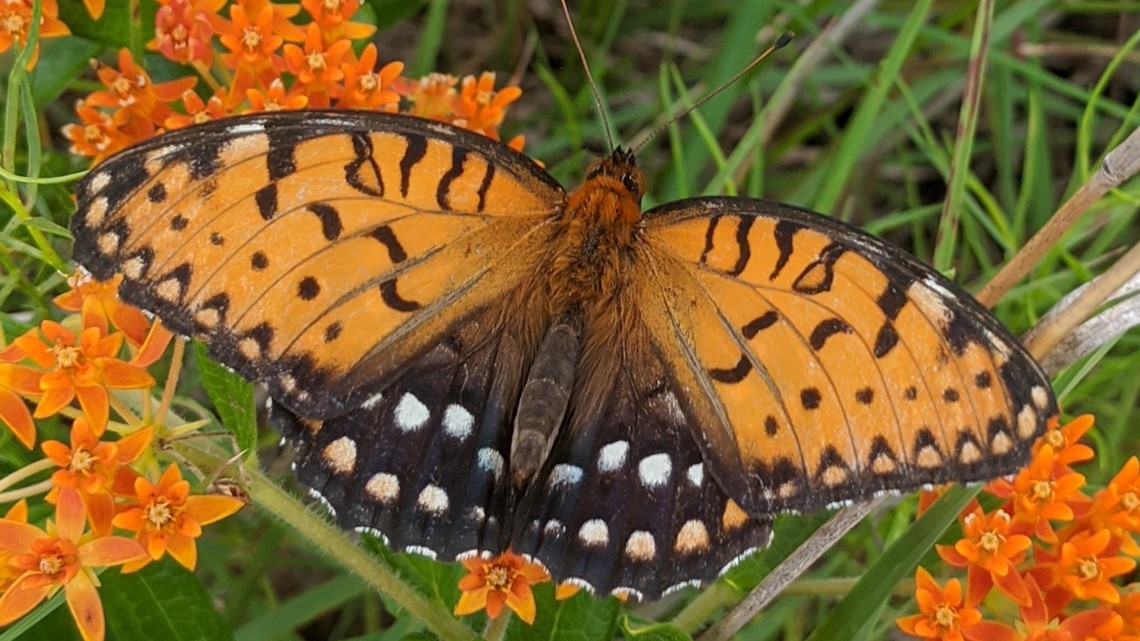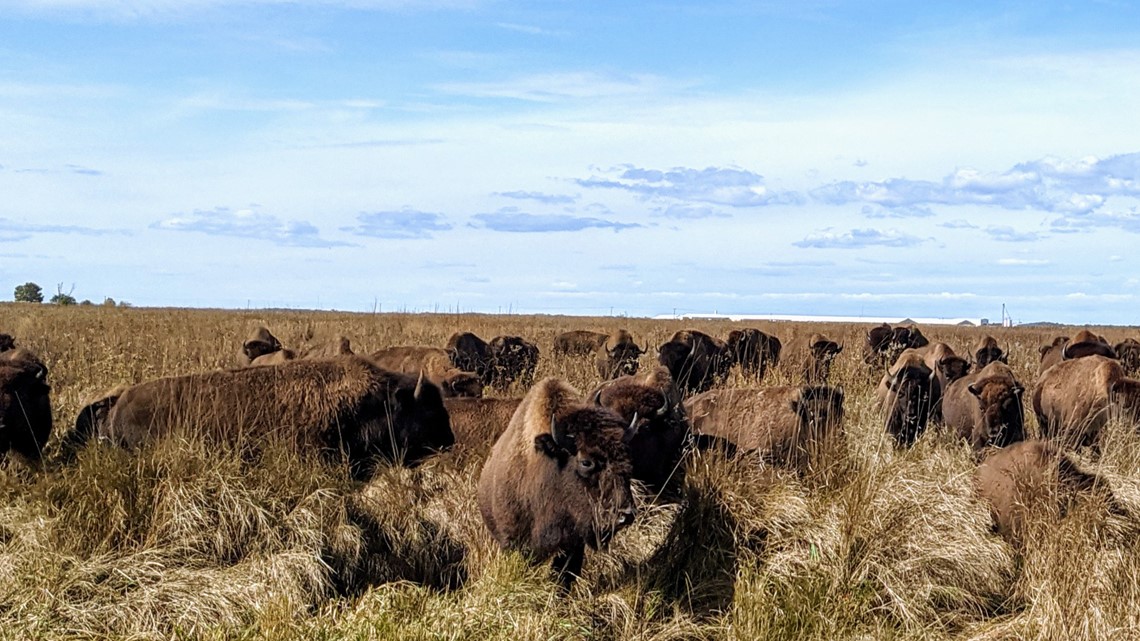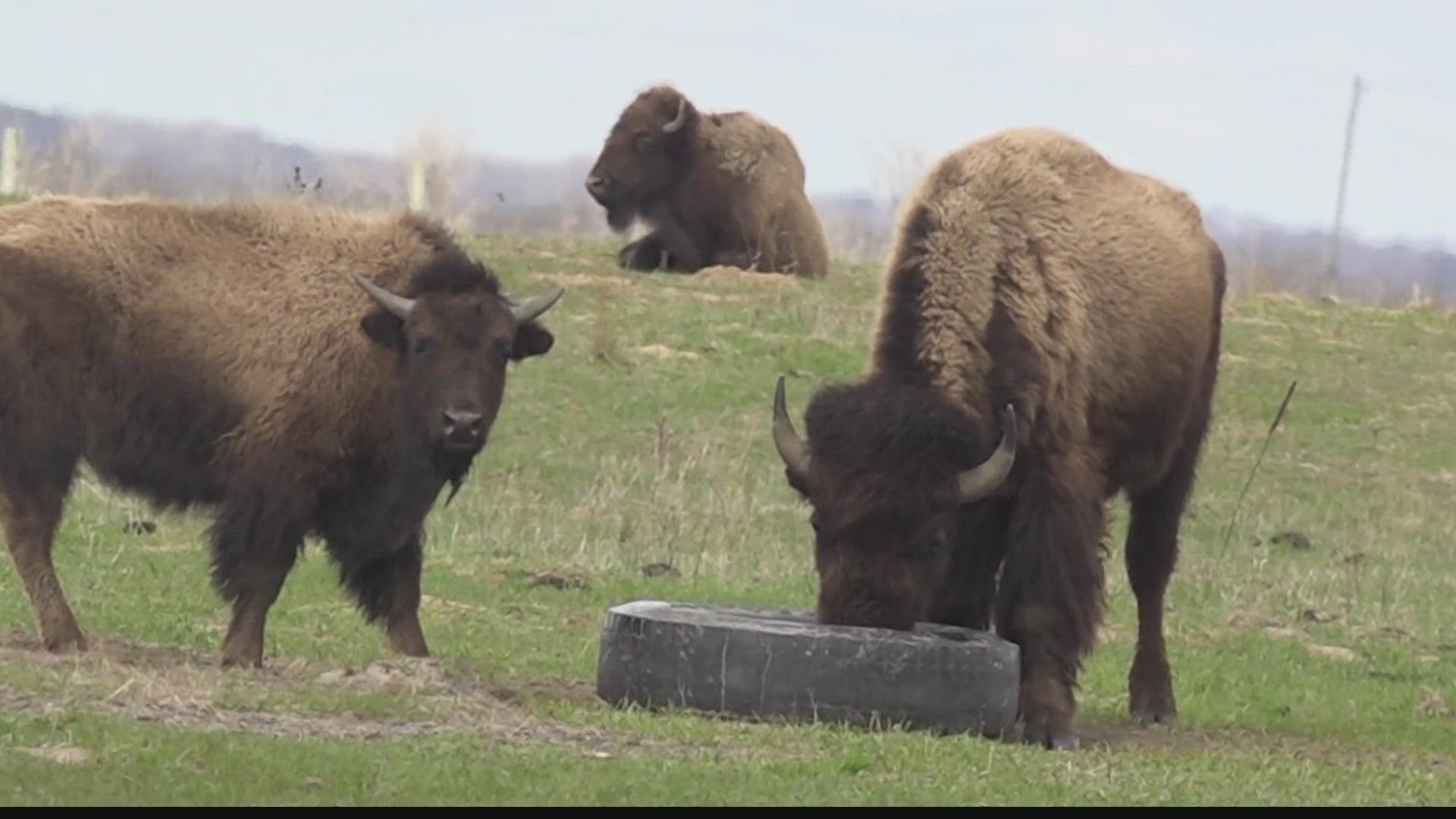MOROCCO, Ind. — When officials drafted versions of the Indiana seal sometime in the early 19th century, so plentiful were bison across the state that the image they eventually settled on was of one fleeing westward as civilization — denoted by a man’s solitary form, cutting down a sycamore tree with an ax — advanced ever further into what was then some of the westernmost parts of the United States.
Within a few more decades, bison would be driven from the state and hunted to near extinction across the country. Today, you’d be hard-pressed to find herds wandering the Hoosier countryside, as was their tendency for thousands of years.
Unless, of course, you’re driving along a stretch of U.S. 41 North near Morocco, where a herd is making a major impact in prairie restoration efforts for the first time in centuries.
“We're not bringing back bison just to have for bison sake, but they're actually an integral part of the Hoosier natural heritage and history,” said Trevor Edmonson, who is a site manager at Kankakee Sands, the more than 1,000-acre enclosure dedicated to preservation of prairies.
In 2016, bison were brought from the Wind Cave National Park in South Dakota to roam the Indiana countryside yet again. Years later, this herd of more than 90 bison is playing a key role in conservation processes.
“They’re charismatic. They’re North America’s largest land mammal, and there’s really nothing like them around anymore,” said Olivia Schouten, who is a land steward and bison manager at Kankakee Sands. “Bison and prairies are adapted to each other, they evolved together, the presence of the bison really, in many ways, helped shape what the prairie is today.”
The herd at Kankakee Sands is essential to ongoing prairie restoration efforts on sites, which were established by the Indiana Nature Conservancy 25 years ago.
Every day, the some 24 pounds of grass the bison eat in a day creates a more suitable habitat for endangered birds and other wildlife. It’s work that couldn’t be done by even the surest of human hands, and without which the fast-growing prairie grass would grow out of control.
“Eating all that grass really makes a lot of room for other plants to grow, like wildflowers and things like that, which then support the diversity of pollinating insects and everything else that comes with a prairie,” Schouten said.
That includes several at-risk insects and imperiled grassland birds. The endangered Regal Fritillary Butterfly, once found across the country, has found a home alongside bison at Kankakee Sands.
“Newton County is sort of the last stronghold. It’s rare everywhere, but Newton County is the last place where it's doing well. And so, we're able to support that butterfly, and we've seen that population grow because tall grass prairie is rare, not just in Indiana, but across the Midwest,” Edmondson said.


While the Indiana bison herd is helping preserve the natural landscape locally, the Nature Conservancy Bison Network consists of 12 herds across the Midwest and Great Plains.
In total, the organization manages around 6,000 bison across the country and is also working with the InterTribal Buffalo Council to restore the animals to tribal lands.
“We were honored to be able to play a supporting role with ITBC in returning the bison to Native nations across North America, and returning them to the original stewards of this land that were here for millennia before European colonization,” Schouten said.
Kankakee Sands also connects two other wildlife habitats — the Willow Slough Fish and Wildlife Area and LaSalle Fish and Wildlife Area — and allows the animals to roam freely within those spaces.
“It's a unique opportunity here to practice restoration, practice nature and support species at scale,” Edmondson said.
The area where the bison now live was once one of Indiana’s largest lakes. Beaver Creek was at least three times the size of Bloomington’s Lake Monroe, and just a little south of what was once the largest inland marsh in the United States. The wide, shallow lake provided crucial habitat to animals like bald eagles, water mammals and bison.
But settlers fully drained it starting in the 1850s, and by 1970, the land was mostly being used for farming. The Indiana Nature Conservancy purchased the more than 7,000 acres 25 years ago to help restore the natural prairie and wetlands landscape.
It's a process to nurture the wildlife that still live among the lakes remnants, sandy dunes and black oak savannas that were there prior to the lake’s draining.
“We think we've done a pretty good job of preserving and recreating many of the functions of the lake in the habitat," Edmonson said. "We can never get the lake back, of course, but we can support wetland habitat and restore prairie that would have been on the outskirts of the lake. We have a lot of the same species here that would have been here back then."


Kankakee Sands is currently awaiting the birth of calves in the springtime and typically sees about 20 to 25 new calves born every year.
The bison are animals that will help restore a sense of balance back to their homelands, after so many generations away.
“That’s why they look so serene here. They’re at home,” Schouten said.

